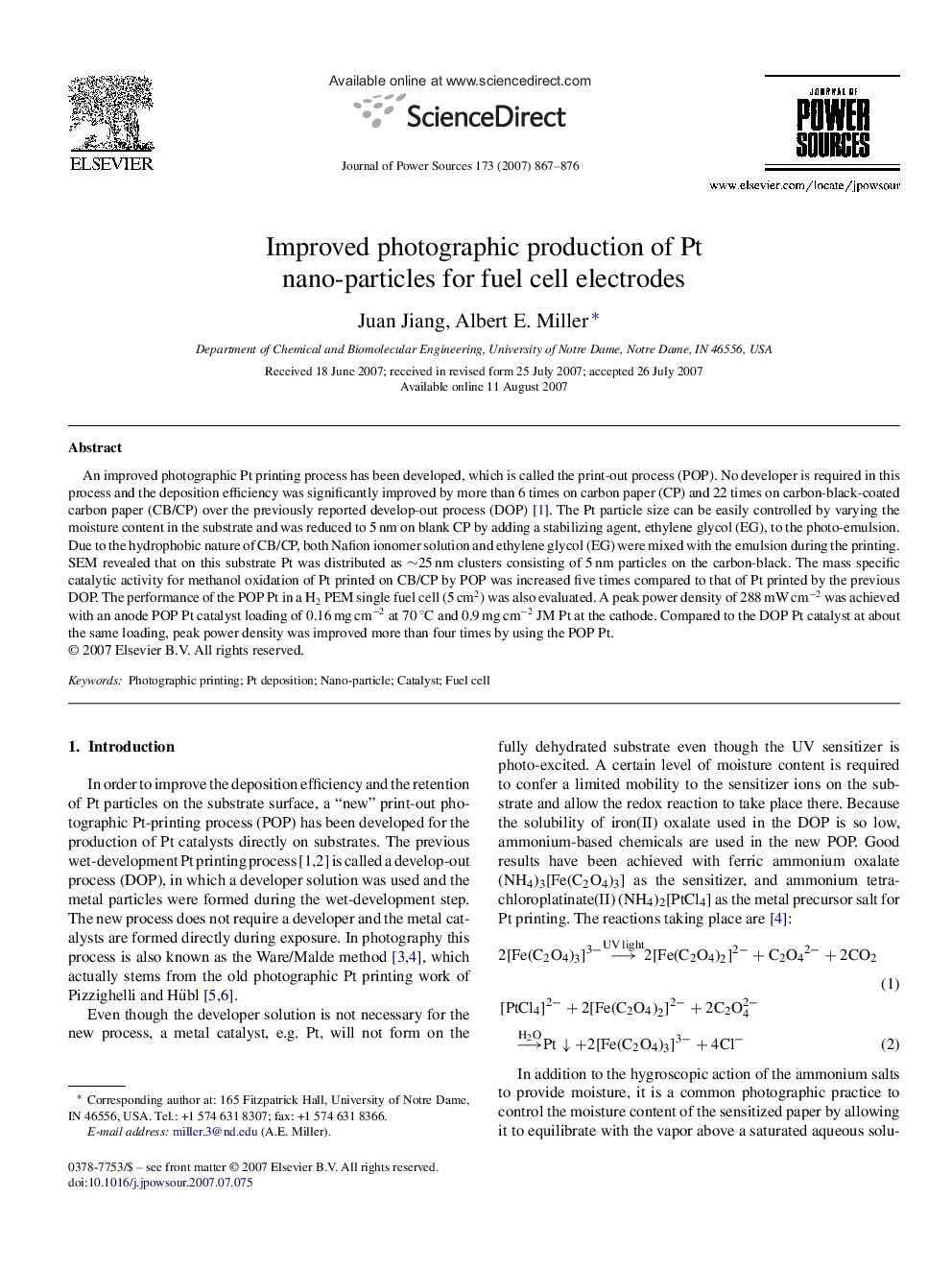| Article ID | Journal | Published Year | Pages | File Type |
|---|---|---|---|---|
| 1291017 | Journal of Power Sources | 2007 | 10 Pages |
An improved photographic Pt printing process has been developed, which is called the print-out process (POP). No developer is required in this process and the deposition efficiency was significantly improved by more than 6 times on carbon paper (CP) and 22 times on carbon-black-coated carbon paper (CB/CP) over the previously reported develop-out process (DOP) [1]. The Pt particle size can be easily controlled by varying the moisture content in the substrate and was reduced to 5 nm on blank CP by adding a stabilizing agent, ethylene glycol (EG), to the photo-emulsion. Due to the hydrophobic nature of CB/CP, both Nafion ionomer solution and ethylene glycol (EG) were mixed with the emulsion during the printing. SEM revealed that on this substrate Pt was distributed as ∼25 nm clusters consisting of 5 nm particles on the carbon-black. The mass specific catalytic activity for methanol oxidation of Pt printed on CB/CP by POP was increased five times compared to that of Pt printed by the previous DOP. The performance of the POP Pt in a H2 PEM single fuel cell (5 cm2) was also evaluated. A peak power density of 288 mW cm−2 was achieved with an anode POP Pt catalyst loading of 0.16 mg cm−2 at 70 °C and 0.9 mg cm−2 JM Pt at the cathode. Compared to the DOP Pt catalyst at about the same loading, peak power density was improved more than four times by using the POP Pt.
